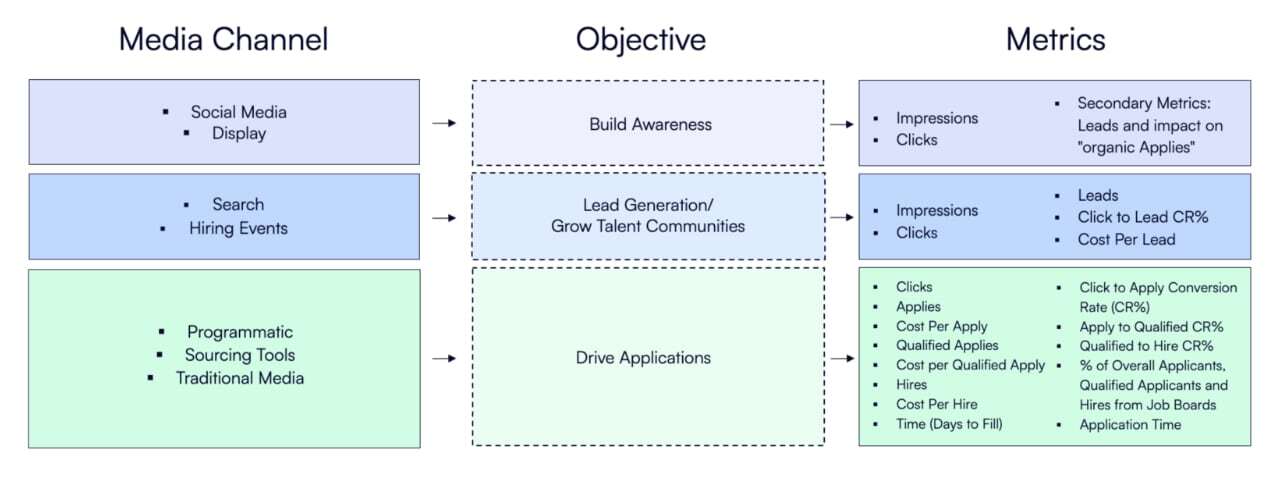Recruitment marketing is evolving rapidly, and planning ahead for 2026 requires a strategic approach that balances efficiency, adaptability, and results. To help you get started, we’ve outlined five steps to create a robust recruitment strategy for the new year.
Step 1: Collect and Analyze Your Data
Data is the foundation of effective recruitment planning. Start by reviewing key metrics such as apply rates, cost-per-click, cost-per-application and cost-per-hire.
Leveraging your own historical data allows you to benchmark your recruitment funnel, evaluate trends, and inform smarter decisions. Next, see how you stack up with your competitors using tools such as the Appcast Benchmark Report or Labor Market Snapshots.
Step 2: Set, Define, and Prioritize Goals
With your data in hand, the next step is to clarify and prioritize your recruitment goals for the year ahead. Some ideas to help get you started could include:
- Increased volume of candidates to help support hiring needs
- Better quality candidates for hard to fill roles
- Higher conversion rates to optimize your recruitment marketing budget
- Improved brand awareness to help engage passive candidates
Align your goals with your organizational priorities to ensure your recruitment strategy supports broader business objectives. Clearly defined goals pave the way for smoother execution and measurable success.
Step 3: Optimize Your Recruitment Marketing Channels
The right mix of media channels will help you to build awareness, generate leads, grow talent communities, and drive applications. Be sure to leverage traditional media, job boards, search and display, and social media to reach the widest audience and maximize your budget. To measure your success, identify your apply goals for each campaign, keeping in mind that they will vary depending on the channel.

Step 4: Reduce Candidate Friction
Did you know that 95% of visits to a career site don’t result in a completed application? There’s a number of reasons for this, ranging from brand awareness, competitive landscape, targeting and timing, or your career site experience.
To help decrease candidate drop-off, Apcast has created Xtend. This new solution will help you engage interested job seekers with relevant and timely messaging, capture site visitors before they leave, automatically engage your talent pool, and boost applicants in your ATS.
Technology can help supplement the recruitment processes—not replace human connection—by enhancing speed, targeting, and follow-up solutions.
Step 5: Foster Employer Branding and EVP
Your Employee Value Proposition (EVP) and employer brand are critical to attracting high-quality candidates. An EVP defines what makes your organization desirable in return for a candidate’s effort, while a strong employer brand communicates your values, benefits, and workplace culture. To strengthen your branding:
- Cultivate an employer brand presence on social media
- Improve and optimize your corporate careers site
- Respond to employee reviews
- Ensure a positive candidate experience
A cohesive branding strategy is key to creating lasting impressions and converting qualified candidates.
Conclusion
Successful recruitment marketing in 2026 requires agility, data-driven decision-making, and a candidate-focused approach. From analyzing past performance to optimizing tech tools and bolstering employer branding, these five steps will help you stay ahead of industry trends to attract, convert, and retain top talent.
For additional resources to help you plan for the new year, check out The 2026 Talent Acquisition and Recruitment Leaders Toolkit


